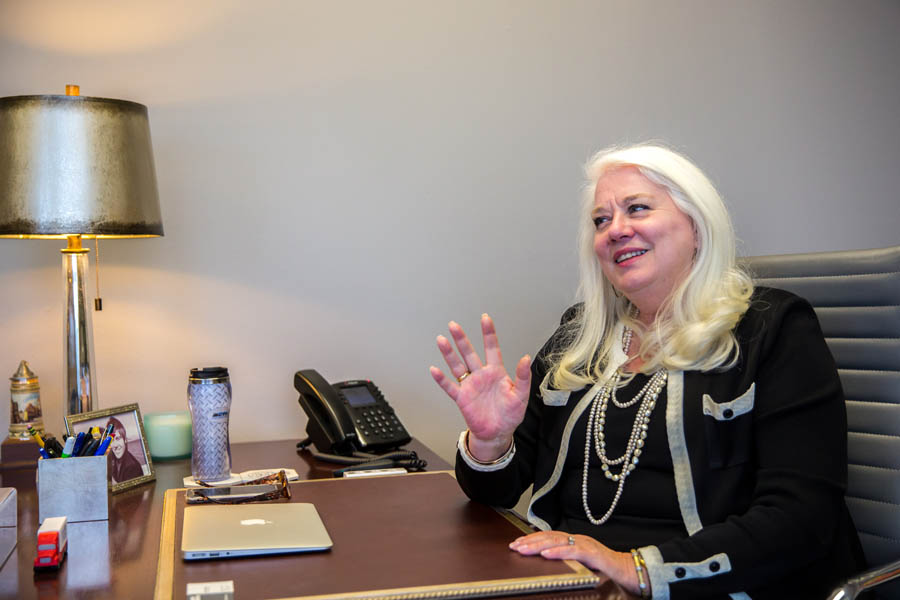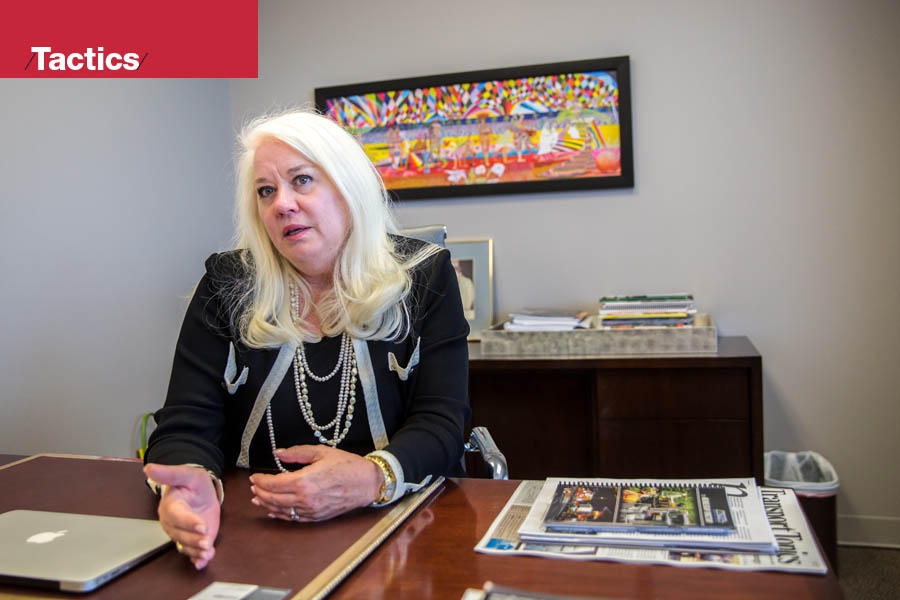Jana Jarvis, president of the Oregon Trucking Associations, discusses why trucking jobs are not going away because of automation, and what the group is doing to attract young people to the profession.
Truck driving is the most common occupation in 29 states, including Oregon, yet the profession faces untold disruption from automation and artificial intelligence. Jana Jarvis, president of the Oregon Trucking Associations since 2015, discusses how the association is preparing for the future.
This interview is edited for length and clarity.
How dependent is the Oregon economy on trucking?
In Oregon 88% of the goods are moved by truck. Eighty percent of all goods are only served by truck. Everything I buy, from my medicine to my shoes, has probably at one point been on a truck.
I tell people who complain about there being too many trucks on the road, there’s a simple solution for that, which is quit buying stuff. Trucking is the lifeblood of the economy. We’re pretty integral to the life of the average consumer.
There’s been a lot of talk about driverless trucks replacing human drivers. Is automation a concern in the trucking industry?
One of the things I keep hearing is that companies like Daimler are going to have driverless trucks in the next five years. I’ve even had the governor tell me something like that. That isn’t the case. I don’t know what the industry is going to look like in 20 or 30 years, but what we in the industry are talking about right now are driver-assisted vehicles.
There are a lot of great things automation has done for the industry, but we call it driver-assisted technology.
Will these new driver-assisted vehicles change anything?
Automation is making truck driving a lot safer. I think automation also has the potential to bring more women into the industry. Traditionally, a driver has had to lift a container onto a crane to put it on the ship. Now that process can be automated. Trucking has traditionally been perceived as a man’s job for a number of reasons. We want to change that.
RELATED STORY: The Truck Stops Here
Why did your organization oppose Oregon’s cap-and-trade bill?
There has been some transition with passenger vehicles to hybrid and electric, but in the medium- and heavy-duty trucks, those options are not available to us yet. Oregon is the most expensive state in the country [in which] to operate a truck.
House Bill 2020 would have only increased our fuel costs and did not give us other options. The bottom line is the more our costs increase, the more the cost of products will increase.
What could be done to reduce your operating costs to make room for something like cap and trade?
That was just the conversation I had with the governor’s office. There are a number of things. Oregon taxes trucking differently than the other 49 states. Here we have a weight-mile tax, which is very cumbersome and encourages evasion.
We also need to think about the cost of congestion. The lost hours of trucking productivity due to congestion are about 1.2 billion hours annually. Not only does congestion add to our costs, it adds to the overall carbon output.

How would you convince someone who might want to get into the industry but is afraid the job of the truck driver might be going away?
The driver does a lot more than just steer the wheel. They deliver. They act as a customer-service representative. There’s paperwork. I’ve seen the video of the automated semi driving from Fort Collins to Colorado Springs, but there was a driver in that truck, and it was surrounded by state police officers.
These trucks can do well on the freeway, but when you get into the city, there would need to be direct designs into the road for automated trucks to work. I also don’t know of any automated receiving docks at this point in time.
What challenges do you see facing the trucking industry?
The biggest barrier to our ability to grow is finding drivers. The average age of a truck driver is mid-50s, so in the next five to 10 years, we’re going to have a lot of retirements. We were short about 50,000 drivers nationally last year. There is talk of being short 180,000 drivers in the next handful of years.
RELATED STORY: Cap and Trade: Lawmakers Face Transportation Conundrum
Why has attracting young people to the truck-driving profession been a challenge?
One of the barriers is that to be an interstate driver, you need to be 21. You have individuals in high school saying, “I might want to drive a truck, but I can’t do it until I’m 21.” There are pieces of legislation we support that would allow younger drivers to apprentice under older drivers. That kind of legislation would be integral to be able to get those folks.
It also has to do with changing perceptions.
What kind of perceptions?
There are a lot of misconceptions about what being a truck driver is all about — sort of that “Smokey and the Bandit” perception of the industry. In the old days, if I had a delivery on the East Coast, I would drive all the way there, pick up another load and drive back. I could be gone for three weeks at a time. Now these larger companies are setting up terminals.
The hub-and-spoke approach to distribution networks is gaining popularity in our industry. There are a lot of jobs now where you can be home every night. There are also jobs where, if you want to see the country, you can do that too. There’s a lot of choice within our industry.
Why does having a robust trucking industry help our state?
Trucking pays a third of the cost of Oregon’s road network. We are 13% of the traffic and we pay 30% of the cost of the roads. Most trucking companies are small, family-owned companies. These are second- and third-generation family businesses, which is what good business in Oregon is all about.
The more expensive it gets to operate here, the more companies back east can come in and buy everything and leverage their cost of doing business in other states.
What kind of work have you been doing to attract new talent?
Every time you have a problem, there is an opportunity. We have people going to workforce boards, which don’t traditionally include trucking. We’ve been trying to reenergize and reengage on those fronts. We look different. We’re very technologically savvy. Truck driving is a really good family-wage job.
Drivers can start in the field at $50,000 per year. It’s a good job for work-life balance commitment; the industry has been very responsive with their distribution-hub models. It’s a terrific profession.
To subscribe to Oregon Business, click here.






